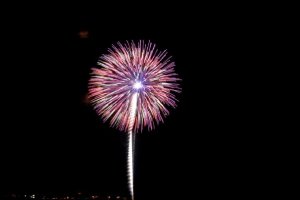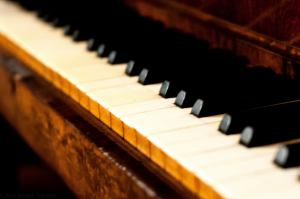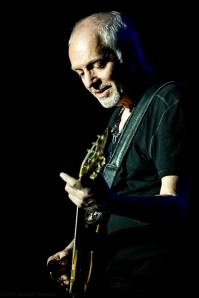Let me start by stating that I am a high ISO junkie. Spending several years as a concert photographer has made me become intimate and comfortable with higher ISO values. What is ISO? Well, for starters, I am not going to get technical on you since that is a page or two on it’s own, especially how it interacts with shutter speed and aperture, but I will cover how to use it and why.
ISO is basically the sensitivity to light of the sensor, or film in the old days. ISO 400 captures twice as much light as ISO 200, 800 four times as much as 200, 1600 eight times as sensitive as 200, etc., etc… This basically allows us to use slower shutter speeds, which is very helpful at night and in other dark situations. After all, who wants to look at a black photograph with nothing or little detail? What’s the point, lol?
There is this huge fear about ISO, mostly due to a complete lack of understanding of it, it’s true limitations, and it’s necessities. Most of our DSLR cameras default to a 100 or 200 ISO. The general rule of thumb is that the lower the ISO, the less problems in the image such as those nasty little green and red speckles along with loss of detail/sharpness. The reality is that each generation of DSLR, and other types of cameras, are consistently getting better with higher ISO values. Just 10 years ago, even ISO 400 was almost too noisy to use on the top end DSLRs, while today, most DSLRs above $600 or so can easily handle ISO settings of 800 or maybe 1600 with little or no degradation to its images. This is great news since it allows us to take images in darker situations that were previously only capable with expensive film.
Many DSLRs now have an auto-ISO setting that allows the camera to add a changing ISO that works in tandem with shutter and/or aperture depending on the auto setting chosen. Read your manual, or better yet an after market book, on your specific camera model to understand how to set this setting. The better DSLRs also give a minimum/maximum range you can set so the auto mode of the camera doesn’t use a high ISO setting that is too high. The down side is that you will have to play around with your own specific camera and experiment to determine how high your ISO can go before it starts degrading your images.
At concerts, I’m using ISO in the 1600-3200 range. The good news is that software can now remove some, and often all, of the nasty colour speckles that are introduced into images through high ISO settings. Again, another area you will need to experiment with your particular camera. The quickie on removing noise is to find the noise reduction setting in your camera and/or your software such as Lightroom, Aperture, or Photoshop. There are plenty of free tutorials on the net that will show you exactly what high ISO noise looks like and how to get rid of it.
Remember that the purpose of this post is not to teach you specifically about ISO and all it’s intricacies, but rather to start using it. If you’re walking through a nature trail, at a late night soccer game with the kids, camping, etc., and it’s just a little too dark (not pitch black) to take pics without the shutter staying open forever, try increasing your ISO to see if you can speed the shutter up to get a shot. And as I mentioned, you need to experiment with your camera to understand it’s limitations. Try setting your ISO to 800, 1600, 2500, and even 3200, and walk around the house to darker areas and take some pics at each ISO setting at the same place and compare them to each other on your PC. If it looks too bad or unusable, then you have a benchmark to start working with.
—
Fireworks shot with ISO 3200.
Shooting in a museum, I had to use ISO 1250 and STILL used a slow shutter speed of 1/15th of second and very wide aperture of f/2.5 since I couldn’t use a flash.
I shot this image of Peter Frampton in concert using ISO 2500 due to the lower light combined with a 1/60th second shutter speed with a 200mm lens, something not advisable due to the camera shake introduced by the hands. But with multiple frames per second, there are almost always images still in perfect focus, even with such a slow speed.



You must be logged in to post a comment.